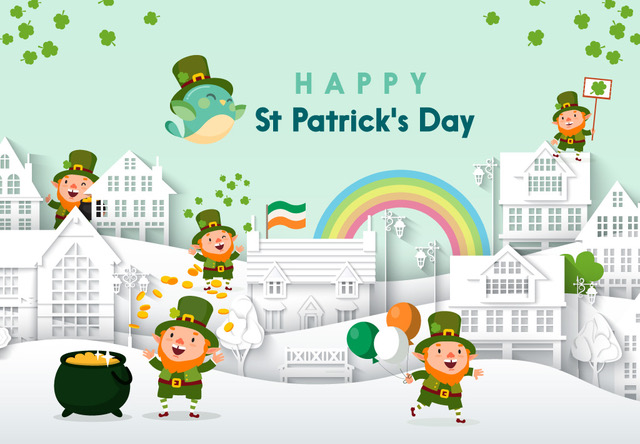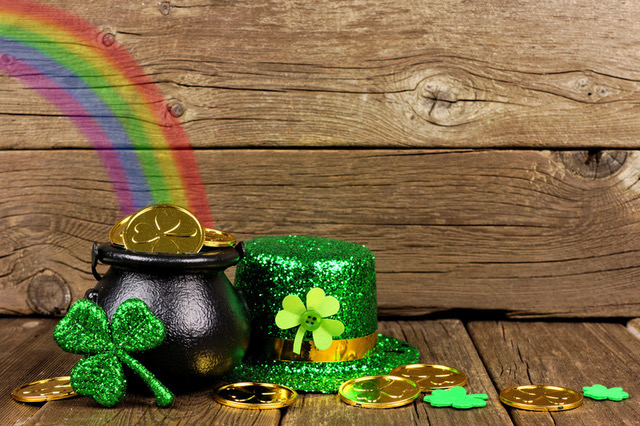
St. Patrick’s Day is celebrated on March 17th everywhere in the world with an Irish community. But who was Saint Patrick?
According to the legend surrounding Saint Patrick, he was actually a British Roman-because Britain was under Roman rule in the 5th century. His real name was Maewyn Succat.
He was taken to Ireland as a captive and made into a slave. He escaped and went back to Britain. The story goes that he had a dream that he was supposed to become a Catholic priest and go back to Ireland to teach Christianity to the people there. So, he entered the church and became a priest.
Afterwards, he changed his name to Patricius (or Patrick) and headed back to Ireland. The name he chose comes from the Latin term for “father figure.”
March 17 of 493 AD is when he is said to have died.
The celebration was championed by an Irish Franciscan friar, named Luke Wadding, in 1631. He was from Waterford, Ireland, and originally intended it to be a traditional day of spiritual renewal.
Annual celebrations of Saint Patrick’s Day in America were said to have started in Boston in the late 1800’s. But research has found that the first celebration was actually in Saint Augustine, Florida…in 1601!
Today, St. Patrick’s Day is an official holiday in Ireland. Some drinks and even food are dyed green, and everyone wears green!

Why is it all green?
The tradition of wearing green didn’t begin until the 19th century in America. The Irish immigrants decided to wear green in support of the Irish Republican cause…and it stuck.
Before that, the color associated with Saint Patrick was blue.
Some legends say that the color choice goes back to the tales of fairies and leprechauns. It was believed that if you wore green, the leprechauns would leave you alone. According to folklore, wearing green made you invisible. You wanted to be invisible because if you weren’t, the tiny leprechauns would sneak up and pinch you!
Everything goes green on Saint Patrick’s Day.
Celebrations in Chicago, Illinois include dying the Chicago River green. In Ireland, the whole country dons a shade of green. Buildings are lit up with green lights, rivers are dyed green, and the nickname for Ireland is, appropriately, the “Emerald Isle.”
Don’t forget the shamrocks!
The shamrock is the most recognized symbol of the Irish. It’s said that Saint Patrick used the three-leaf shamrock to symbolize the Holy Trinity in Christianity to the people of Ireland. And, occasionally, a fourth leaf will sprout. The “four-leaf clover” is said to bring good luck to whoever finds it!
The foods of Saint Patrick’s Day include anything Irish such as Irish soda bread, Irish potato soup, and Irish stew.
Corned beef and cabbage are the traditional St. Patrick’s day foods in America. The roots of that dish go back to the Irish immigrants in New York. Beef could be bought for a penny a pound from the trade ships docked in Manhattan.
The beef was kept on the ships in a very salty brine so it wouldn’t go bad while the ship was at sea. To get rid of some of the saltiness, the beef would be boiled three times! Cabbage was added to the last boil to make it a meal.
And speaking of meals, you can explore other Irish dishes in the UK eat2explore box!

Rowena Scherer is a French Culinary Institute-trained home chef who knows what kids love to eat and how food and culture are intertwined. When she discovered that her own kids (who loved travel and world cuisines) couldn't even chop an onion, she was momentarily crushed. She'd grown up in Malaysia, and some of her fondest memories were of cooking together there, as a family, learning and telling stories.
Now she designs cooking kits to recreate that experience, and broaden it, using the unique foodways of various cultures as a bridge into fun learning and great eating for curious kids and their adults.eat2explore office: 646-207-7271





